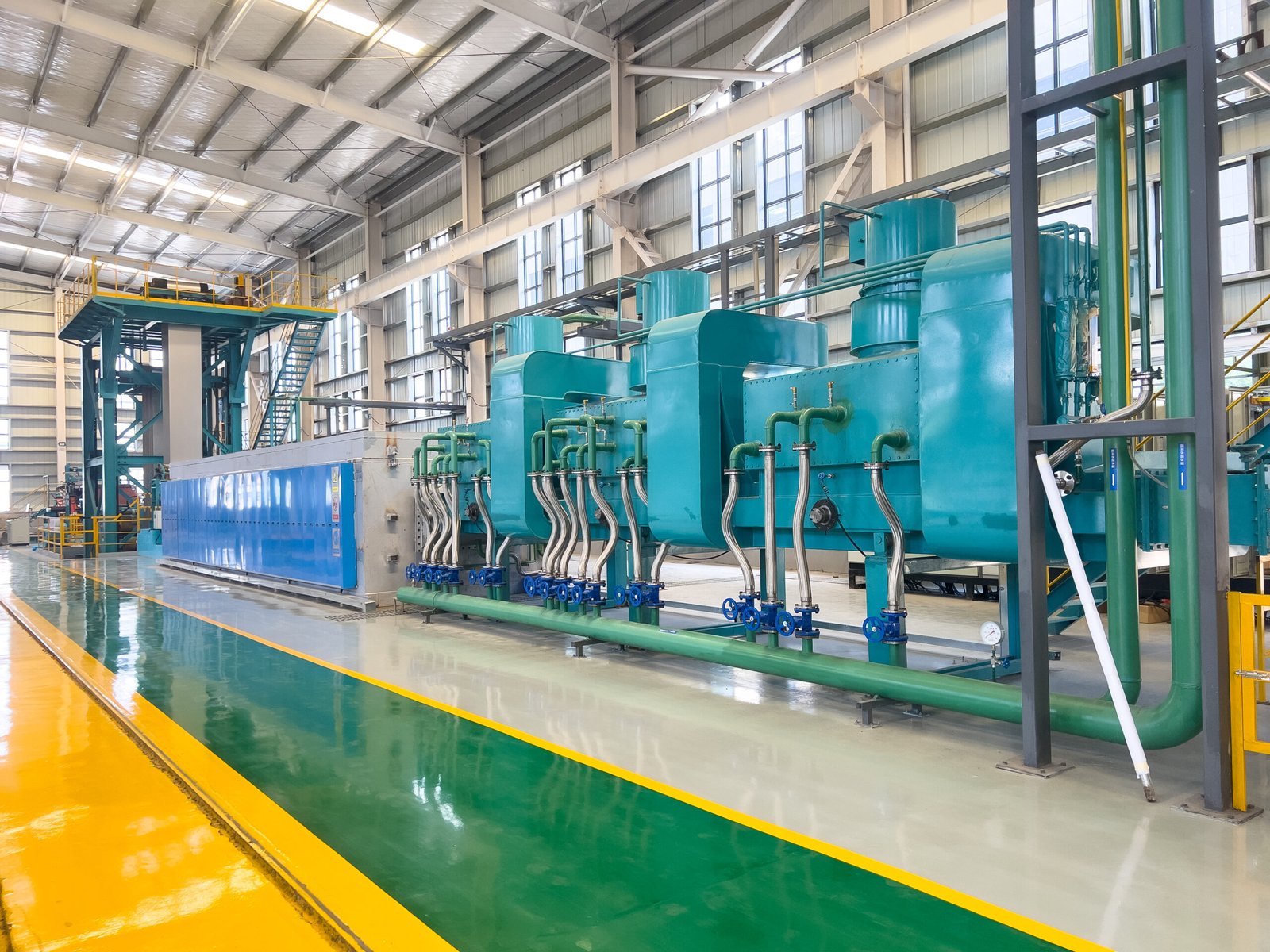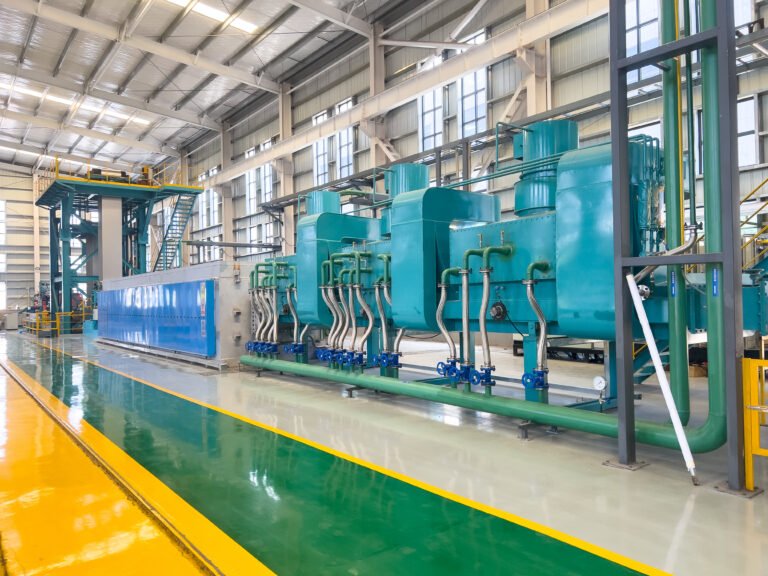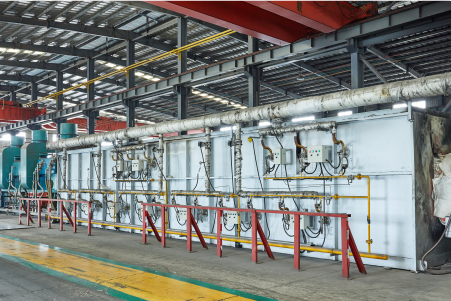
Are you struggling with copper that's too brittle for forming or too soft for its final application? This common problem leads to production defects, material waste, and costly delays. Understanding the fundamental metallurgical processes of annealing and work-hardening is the key to unlocking optimal material properties.
Copper annealing is a heat treatment process that softens the metal, increasing its ductility and making it easier to form. In contrast, work-hardening (or strain hardening) is a mechanical process that strengthens copper, increasing its hardness but reducing its ductility through physical deformation like rolling or drawing.
Choosing the right process isn't just an academic exercise; it's a critical manufacturing decision that directly impacts production efficiency, energy consumption, and the final product's performance and reliability. In my years of experience, I've seen how mastering this balance separates the successful manufacturers from those who struggle. Let’s explore these differences more deeply.
The relationship between annealing and work-hardening is not one of opposition, but of synergy. In most advanced manufacturing cycles, they are two sides of the same coin. A material is work-hardened during a forming process1 like wire drawing, and then it is annealed to restore its ductility for the next stage. This cycle can repeat multiple times. For instance, industry data shows that implementing a precisely controlled intermediate annealing step can increase the success rate of deep-drawing operations by up to 25%, drastically reducing scrap. This proves that annealing is not just for creating a soft final product; it's a strategic tool used throughout the production chain to enable complex shaping that would otherwise be impossible.
What are the key differences between copper annealing and work-hardening?
Confused about why your copper is sometimes soft and malleable, and other times hard and brittle? This uncertainty can lead to inconsistent processing and failed parts. The answer lies in understanding that you are observing the results of two distinct, yet complementary, metallurgical transformations.
The primary difference lies in the mechanism: annealing is a thermal process using heat to soften copper by realigning its crystal structure, thereby increasing ductility. Work-hardening is a mechanical process that uses physical force to strengthen copper, increasing hardness at the expense of ductility.
Understanding these core differences is the first step toward gaining full control over your material. One process adds energy in the form of heat to create softness and order, while the other adds energy through mechanical force to create strength and internal stress. This duality is central to all metal forming, and mastering it involves knowing precisely when to apply heat and when to apply force. At AKS, we often consult with clients who are trying to optimize this very balance. They might be dealing with edge cracking during rolling (too much work-hardening) or a lack of structural integrity in the final part (improper annealing). By examining their process, we can pinpoint where a controlled thermal cycle in one of our furnaces can resolve the issue, turning a production headache into a streamlined, predictable operation. It's not just about heating or pressing metal; it's about strategically manipulating its atomic structure.
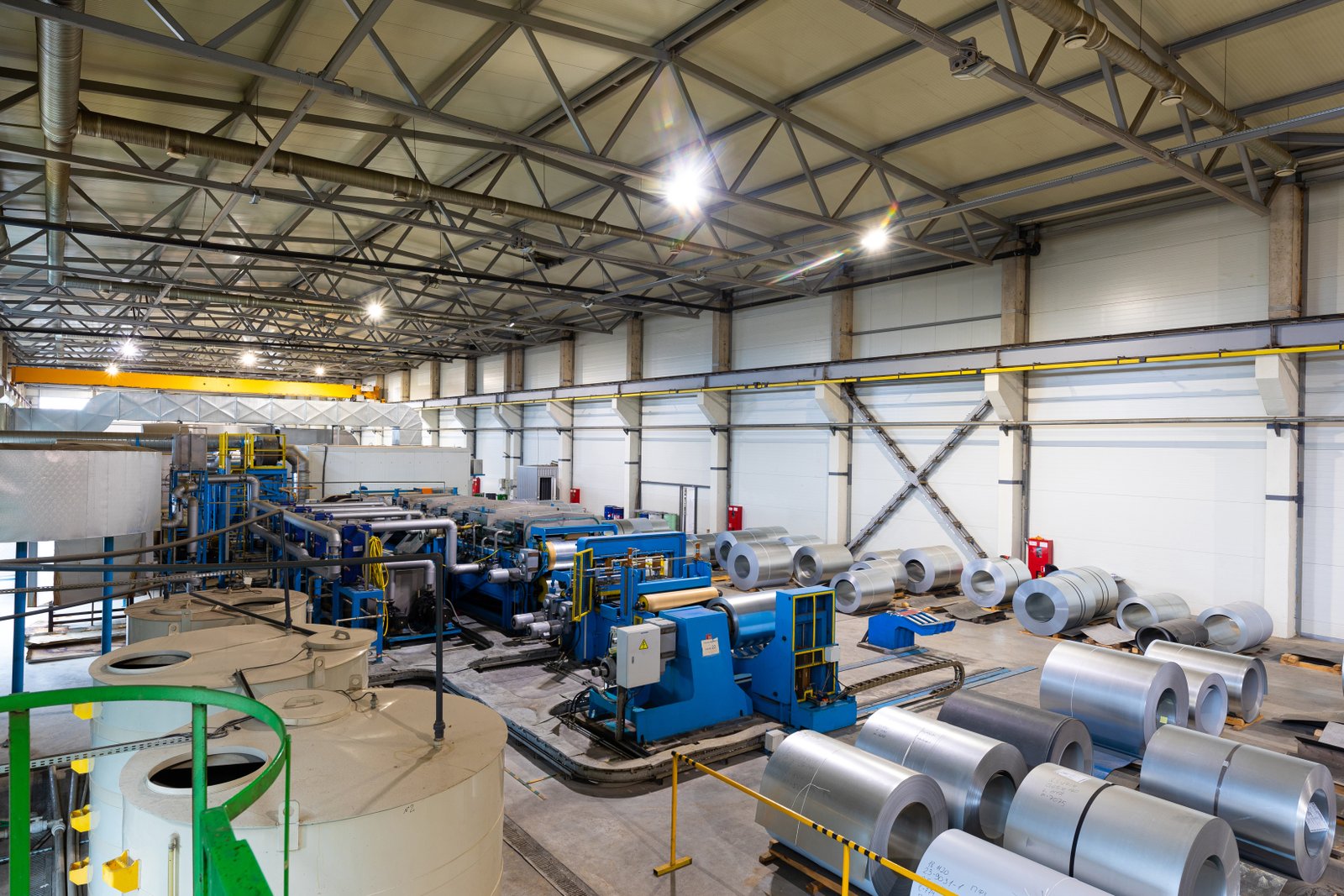
The distinction between these two processes goes deeper than just "heating vs. deforming." It's a fundamental manipulation of the material at the atomic level, with each process initiating a unique set of changes that dictate the copper's final behavior. Choosing incorrectly can mean the difference between a high-yield production run and a pile of expensive scrap. For example, a client in the automotive sector producing copper gaskets needs a final product that is soft enough to create a perfect seal. For them, the final step must be a precise bright anneal. Conversely, a manufacturer of electrical spring connectors needs a work-hardened component that will resist deformation over thousands of cycles. For them, annealing is an intermediate step used to facilitate manufacturing, not to define the final product. Understanding this application-driven context is what allows for intelligent process design. It requires a holistic view of the entire production line, recognizing that annealing and work-hardening are not isolated events but interconnected stages in a carefully choreographed dance to achieve the desired outcome.
The Thermal Mechanism of Annealing: A Reversal of Strain
Annealing is a thermally driven process designed to reverse the effects of work-hardening. When copper is worked, its internal crystal structure becomes strained and filled with defects known as dislocations. By heating the copper to a specific temperature, typically between 300°C and 650°C, we provide the necessary energy for the atoms to rearrange themselves. This process, known as recrystallization, forms new, strain-free grains within the metal's microstructure.
The result is a return to a softer, more ductile state. The key here is control. In our AKS bright annealing furnaces, we use a protective atmosphere of cracked ammonia or hydrogen-nitrogen mixtures. This is critical because, at these temperatures, copper would readily oxidize if exposed to air, ruining its surface finish and conductivity. The controlled atmosphere ensures the copper emerges with a clean, bright surface, ready for subsequent forming or for use as a final product. This precision is what allows manufacturers to reliably restore formability without compromising material quality.
This is not just about making the metal soft; it's about resetting its metallurgical clock. Consider a client producing extremely fine-gauge copper wire for electronics. The wire is drawn through a series of dies, becoming progressively harder and more brittle with each pass. Without intermediate annealing, the wire would eventually snap. By passing the wire through one of our continuous annealing furnaces, its ductility is restored, allowing the drawing process to continue. This cycle of hardening and softening is fundamental to achieving the final, ultra-fine dimensions required for modern electronics.
The Mechanical Driver of Work-Hardening: Dislocation Tangling
Work-hardening, also known as strain hardening, operates on a completely different principle. Instead of using heat, this process relies on mechanical deformation at a temperature below the metal's recrystallization point (i.e., cold working). Processes like rolling, drawing, or stamping force the atoms within the crystal lattice to slip past one another. This movement creates and multiplies dislocations—line defects in the crystal structure.
As deformation continues, these dislocations move and interact, eventually becoming tangled and impeding each other's movement. This "dislocation traffic jam" is what makes the material stronger and harder. The more the copper is worked, the denser the tangle of dislocations becomes, and the more force is required to cause further deformation. This is why a copper strip becomes noticeably stiffer after just a few passes through a rolling mill.
While this process increases tensile strength and hardness, it comes at a cost. The tangled dislocations severely restrict the plastic flow of the material, which is why work-hardened copper has significantly lower ductility and is more prone to fracture if bent too far. A practical example is a manufacturer of brass ammunition casings we worked with. The deep-drawing process to form the casing heavily work-hardens the brass. The body of the casing needs to be hard for structural integrity, but the mouth needs to be soft to allow for crimping onto the bullet. This is achieved by selectively annealing only the mouth of the casing, demonstrating a sophisticated application of both processes on a single component.
A Comparative Analysis: Process Parameters and Outcomes
To truly grasp the practical implications, it's helpful to compare these processes side-by-side. The choice between them—or how to combine them—is dictated entirely by the desired properties at each stage of production. An effective manufacturing plan often includes multiple cycles of work-hardening followed by annealing to achieve a complex final geometry with specific localized properties.
Here’s a direct comparison of the key parameters and their metallurgical consequences:
| Feature | Copper Annealing | Copper Work-Hardening |
|---|---|---|
| Primary Input | Thermal Energy (Heat) | Mechanical Energy (Force) |
| Mechanism | Recrystallization & Grain Growth | Dislocation Generation & Tangling |
| Effect on Hardness | Decreases | Increases |
| Effect on Ductility | Increases | Decreases |
| Microstructure | Forms new, equiaxed, strain-free grains | Elongates existing grains, increases dislocation density |
| Typical Goal | Restore formability, relieve stress | Increase strength and wear resistance |
This table clarifies the trade-offs. As a manufacturer, your goal is to navigate these trade-offs effectively. When we design a heat treatment line, like our continuous bright annealing furnaces for stainless steel and copper strips, we focus on giving operators precise control over the annealing variables—temperature, time, and atmosphere. This precision allows them to perfectly counteract the effects of work-hardening, producing a final material that meets exact specifications for ductility, grain size, and surface finish, ensuring both manufacturability and end-product performance.
Annealing increases copper ductilityTrue
Annealing softens copper by realigning its crystal structure through heat treatment, making it more malleable for forming processes.
Work-hardening reduces conductivityFalse
Work-hardening primarily affects mechanical properties like hardness and ductility, but has minimal impact on copper's electrical conductivity.
How does copper annealing affect the material's microstructure?
Have you ever produced a batch of copper components only to find they lack the required ductility, leading to failures during assembly? This often stems from an improperly controlled microstructure. Annealing isn't just a simple heating process; it's a sophisticated microstructural transformation.
Copper annealing fundamentally alters the material's microstructure by initiating a three-stage process: recovery, recrystallization, and grain growth. It replaces the deformed, elongated grains of work-hardened copper with new, equiaxed, strain-free grains, which is the direct cause of restored ductility and softness.
Understanding these stages is crucial for any manufacturer looking to achieve consistent, high-quality results. The final properties of your copper—its strength, formability, and even its surface appearance—are written in the language of its grains. By precisely controlling the annealing process, you are essentially rewriting the material's internal structure to meet your exact specifications. This level of control requires not just heat, but a deep understanding of the thermal dynamics at play, which is why partnering with furnace experts is so critical for success in today's competitive market. Let’s delve into what happens during each of these transformative stages.
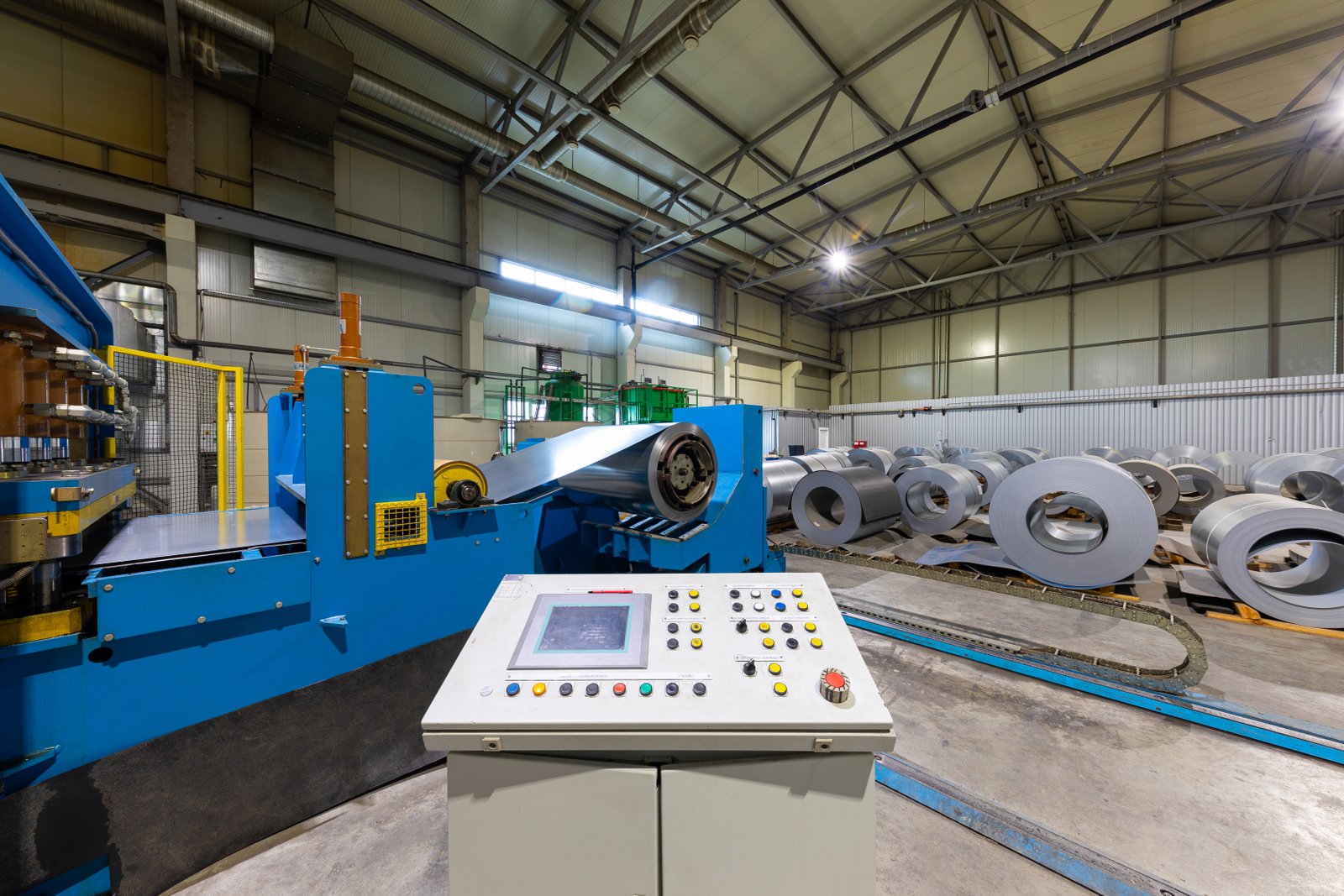
The journey from a hard, brittle state to a soft, ductile one is a carefully orchestrated microscopic ballet. Imagine looking at the copper's internal structure through a powerful microscope. In its work-hardened state, you would see grains that are flattened and stretched in the direction of the mechanical work. The internal structure is chaotic and stressed. When you begin to apply heat in a controlled environment like an AKS annealing furnace2, you are providing the energy for this chaotic structure to heal itself. First, during recovery, some of the internal stress is relieved as dislocations begin to tidy up, but the grain shape remains largely unchanged. As the temperature rises to the critical point, entirely new, perfectly formed grains begin to nucleate and grow, consuming the old, deformed ones. This is recrystallization—the heart of the annealing process. If you continue to apply heat, these new grains will start to merge and grow larger. Each stage has a profound impact on the final mechanical properties, and mastering the transition between them is the key to high-fidelity heat treatment.
Stage 1: Recovery - Relieving Internal Stress
The first stage of the annealing process, recovery, begins as soon as heat is applied. At temperatures below the point of recrystallization, the atoms in the crystal lattice vibrate more energetically. This added thermal energy allows dislocations within the strained lattice to move, rearrange, and in some cases, annihilate each other. This process is not powerful enough to create new grains, so the overall grain structure and its elongated shape remain unchanged. However, it effectively reduces the number of point defects and lowers the density of dislocations, which in turn relieves a significant portion of the internal residual stress locked in the material from prior cold work.
The primary benefit of the recovery stage is stress relief without a significant loss in hardness. This can be a desirable outcome in specific applications. For example, a client of ours in the electronics industry manufactures precision-stamped connectors. The stamping process induces stress, which can cause the parts to warp over time, affecting their reliability. However, they need the connectors to retain most of their work-hardened strength. By using a low-temperature annealing cycle—essentially holding the process in the recovery phase—they can relieve the detrimental internal stresses while preserving the necessary hardness and springiness of the components.
This stage highlights the nuance of heat treatment. It's not always about achieving maximum softness. Sometimes, the goal is a subtle adjustment of properties. Our bogie hearth furnaces3, for instance, offer extremely uniform temperature control, making them ideal for these precise, low-temperature stress-relieving cycles on large batches of components. By stopping the process before recrystallization begins, manufacturers can fine-tune the material's properties to a very specific degree.
Stage 2: Recrystallization - The Birth of New Grains
As the temperature of the copper rises into the true annealing range (e.g., above 400°C for C11000 copper), the process enters its most transformative stage: recrystallization. The thermal energy is now sufficient to overcome the activation barrier for the nucleation of entirely new, strain-free grains. These new grains typically begin to form at the most heavily deformed areas of the old microstructure, such as at the original grain boundaries.
These new, equiaxed (equally sized in all directions) grains grow outwards, consuming the old, elongated, and dislocation-dense grains until the entire microstructure has been replaced. This atomic-level reset is what causes the most dramatic changes in mechanical properties. The tangled web of dislocations from work-hardening is completely erased, resulting in a significant drop in tensile strength and hardness, and a massive increase in ductility and formability. The material is now in its softest possible state, ready for extensive forming.
The success of this stage hinges on precise control of temperature and time. At AKS, we've seen firsthand how critical this is. A customer producing high-quality copper cookware needed a perfectly uniform, fine-grained structure to allow for deep drawing without surface defects like the "orange peel" effect. By using one of our continuous bright annealing furnaces with multiple, independently controlled heating zones, they were able to establish a precise temperature profile. This ensured that the entire copper strip underwent complete recrystallization without significant grain growth, resulting in a 30% reduction in forming defects and a superior final product finish. This level of process control is what transforms annealing from a crude softening process into a high-precision manufacturing tool.
Stage 3: Grain Growth - The Risk of Over-Annealing
If the copper is held at the annealing temperature for too long after recrystallization is complete, the process enters the third and final stage: grain growth. During this phase, the newly formed, strain-free grains begin to coarsen. Smaller grains are consumed by larger ones as the system seeks to reduce its total grain boundary area, a state of lower overall energy. This results in a microstructure characterized by fewer, but much larger, grains.
While a larger grain structure can be desirable for a few niche applications (like improving high-temperature creep resistance), it is generally detrimental for most copper products. Larger grains can lead to a rough surface finish (the "orange peel" effect) after forming and can reduce the material's strength and fatigue life. Therefore, over-annealing is a significant risk that must be managed through precise process control.
This is where the cooling system of a furnace becomes just as important as its heating system. Our advanced cooling systems are designed to rapidly and uniformly cool the material as soon as it exits the heating chamber. By precisely controlling the cooling rate, we can effectively "freeze" the microstructure at the optimal point—right after recrystallization is complete but before significant grain growth can occur. This ensures our clients can consistently produce copper with a fine, uniform grain structure, which is essential for achieving superior mechanical properties and a flawless surface finish. It underscores the fact that a world-class annealing furnace is a complete thermal system, managing both heating and cooling with equal precision.
Annealing creates new strain-free grainsTrue
During recrystallization, new equiaxed grains replace the deformed structure, restoring ductility.
Recovery stage changes grain shapeFalse
The recovery stage only relieves internal stresses while maintaining the original elongated grain structure.
In what ways does work-hardening alter copper's mechanical properties?
You’ve just rolled a copper strip, and now it feels much stronger, but it cracks when you try to bend it. This frustrating trade-off is the direct result of work-hardening. Understanding this process is key to predicting how your material will behave and planning your manufacturing steps.
Work-hardening, or strain hardening, fundamentally alters copper’s mechanical properties by significantly increasing its tensile strength and hardness. This strengthening comes at a direct cost: a sharp decrease in ductility and a slight reduction in its renowned electrical conductivity due to disruptions in the crystal lattice.
This change is not magic; it’s a predictable consequence of physically deforming the metal. Every time you bend, roll, or draw copper, you are fundamentally changing its internal structure, making it more resistant to further deformation. This principle is harnessed to create strong, durable parts, but it must be managed carefully to avoid making the material too brittle for its intended use or for subsequent manufacturing steps. It's a constant balancing act between adding strength and retaining the ability to form the material into its final shape.
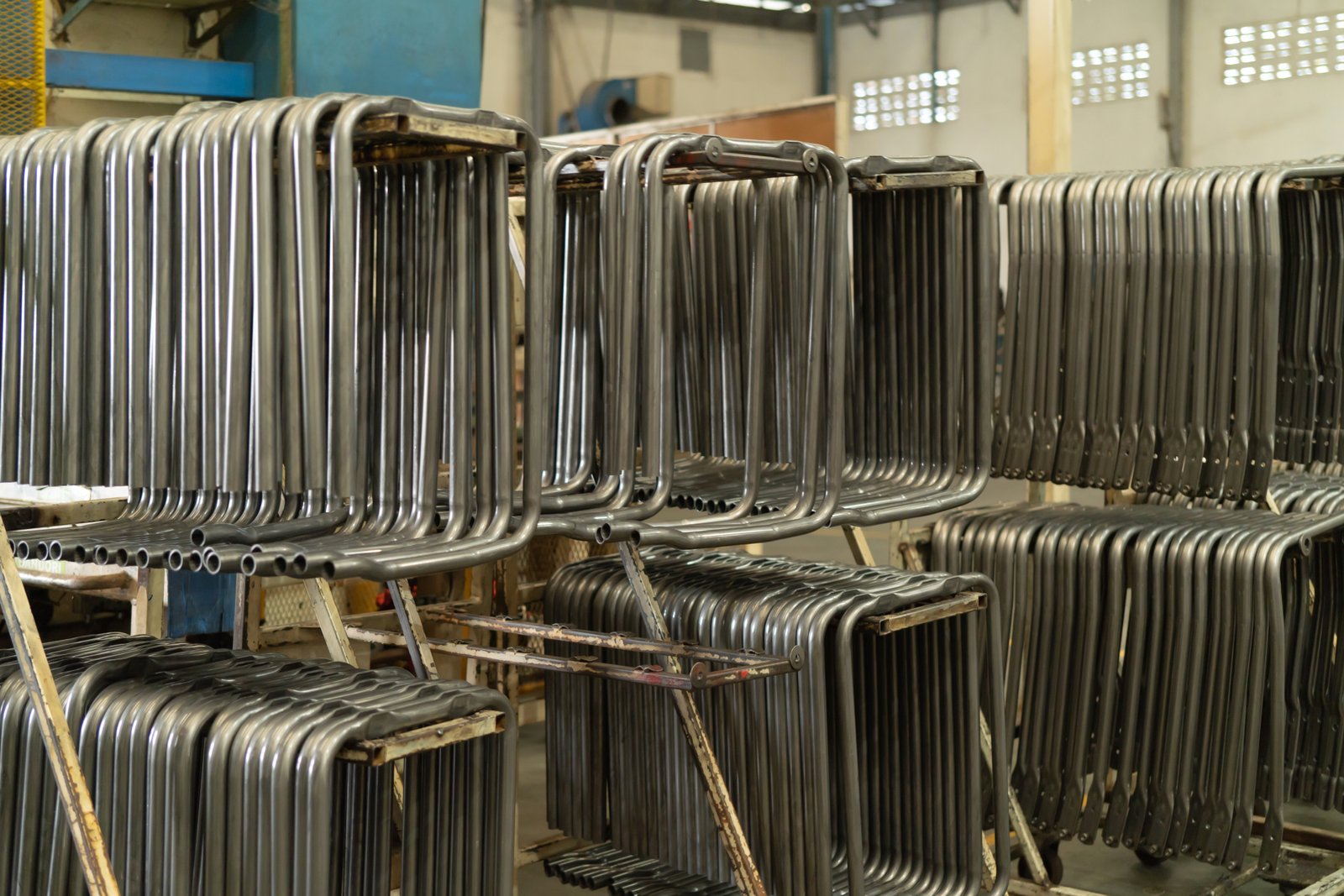
Think of the copper's crystal lattice as a series of neatly stacked atomic layers. In its soft, annealed state, these layers can slide over each other with relative ease, allowing the material to be bent and stretched. When you apply mechanical force, you are not just changing the shape of the copper; you are creating defects—dislocations—within these atomic layers. As you continue to work the material, these dislocations multiply and start to get in each other's way, like a traffic jam on a busy highway. This atomic-level gridlock is the very source of increased strength and hardness. The atoms can no longer slide past each other easily. However, this same gridlock is what reduces ductility. With the atomic planes locked up, the material can no longer stretch and flow; instead, when pushed too far, it fractures. This microscopic phenomenon4 has macroscopic consequences that every metalworker must understand and control.
The Direct Impact on Hardness and Tensile Strength
The most prominent effect of work-hardening is a dramatic increase in copper’s hardness and tensile strength. This is a direct result of increasing the dislocation density within the material's crystal structure. In its fully annealed state, copper is very soft, with a low density of dislocations, allowing the atomic planes to slip easily. When a mechanical force is applied—through rolling, drawing, or stamping—new dislocations are created and the existing ones move until they become entangled with each other and with grain boundaries.
This tangled network of dislocations acts as a barrier to further dislocation movement. Since plastic deformation is fundamentally a process of dislocation motion, impeding this motion makes the material significantly stronger and more resistant to indentation and scratching (i.e., harder). The increase can be substantial. For example, commercially pure copper (C11000) in its soft, annealed state might have a tensile strength of around 220 MPa (32 ksi). After being cold-worked to a "full hard" temper, its tensile strength can soar to over 375 MPa (54 ksi), an increase of over 70%.
This property is intentionally leveraged in many industries. At AKS, we have clients who manufacture high-strength fasteners and electrical terminals. They rely on the work-hardening imparted during the stamping and forming process to ensure their products have the necessary mechanical strength to perform reliably in demanding applications. The process transforms a soft, compliant raw material into a robust, durable final component.
The Critical Trade-Off: Sacrificing Ductility and Formability
This gain in strength does not come for free. The very mechanism that increases hardness—the tangling of dislocations—simultaneously reduces the material’s ductility. Ductility, often measured as percent elongation, is the material's ability to deform plastically under tensile stress before it fractures. In the soft, annealed state, copper is famously ductile and can be stretched to over 50% of its original length before breaking.
As work-hardening progresses, the locked-up crystal structure loses its ability to flow. The atomic planes can no longer slip past one another, and the material becomes brittle. For the same C11000 copper that saw its strength double, its elongation can plummet from over 50% down to less than 5% in a full-hard state. This has massive implications for manufacturing. If you try to perform a severe bend or a deep draw on a heavily work-hardened piece of copper, it will crack.
This is why intermediate annealing is so critical in multi-stage forming operations. I recall a client in the automotive supply chain who was producing complex, bent copper tubing for fluid transfer systems. Their multi-stage bending process was causing an unacceptably high scrap rate due to cracking. By integrating one of our compact mesh belt furnaces into their production line for an intermediate anneal, they were able to restore the copper's ductility mid-process. This allowed them to complete the final, most severe bends without fracture, improving their yield by nearly 40%. It's a perfect example of how annealing is used to manage the negative effects of work-hardening.
The Often-Overlooked Effect on Electrical Conductivity
For many copper applications, its high electrical conductivity is its most important property. While not as dramatic as the changes in mechanical properties, work-hardening does have a measurable negative impact on conductivity. The perfect, orderly crystal lattice of fully annealed, high-purity copper provides an easy path for electrons to flow. The dislocations and internal stresses introduced by cold working disrupt this orderly structure.
These lattice defects act as scattering centers for the conducting electrons, effectively increasing the material's electrical resistivity (the inverse of conductivity). The effect is not enormous—typically a reduction of a few percent—but in high-performance applications, every bit of conductivity counts. For instance, in the manufacturing of high-frequency cables or high-efficiency motor windings, this loss can be significant enough to affect performance.
This is why the final processing step for high-purity copper wire is almost always a carefully controlled final anneal. This process not only softens the wire for flexibility but, more importantly, it heals the lattice defects created during the drawing process, restoring the copper's electrical conductivity to its maximum potential, often reaching 101% IACS5 (International Annealed Copper Standard). This demonstrates that the choice of processing is not just about mechanical properties but also about optimizing the functional properties that make copper such a vital industrial material.
Work-hardening increases copper's strengthTrue
Work-hardening creates dislocations in copper's crystal lattice that impede further deformation, resulting in increased tensile strength and hardness.
Work-hardening improves copper's ductilityFalse
Work-hardening actually reduces ductility by creating a tangled network of dislocations that prevent atomic planes from sliding, making the material more brittle.
What applications are best suited for copper annealing vs work-hardening?
Choosing the wrong material state for your application is a recipe for failure. A part that needs to be strong might deform, while a part that needs to be formed might crack. Navigating this choice is critical for designing a successful and reliable product.
Soft, ductile annealed copper applications is ideal for applications requiring extensive shaping, such as plumbing tubes, electrical wiring, and architectural panels. In contrast, strong, rigid work-hardened copper applications is necessary for applications demanding structural integrity and wear resistance, like electrical connectors, springs, and fasteners.
However, the most sophisticated applications don't just choose one or the other; they use both processes strategically. A component may be annealed to allow for initial forming, then partially work-hardened to provide strength in key areas, and even selectively annealed again to create soft zones for sealing or crimping. Understanding this interplay is key to unlocking advanced manufacturing capabilities. My experience has shown that the most innovative companies are those that view annealing and work-hardening not as a simple choice, but as a sequence of steps to build the perfect component.
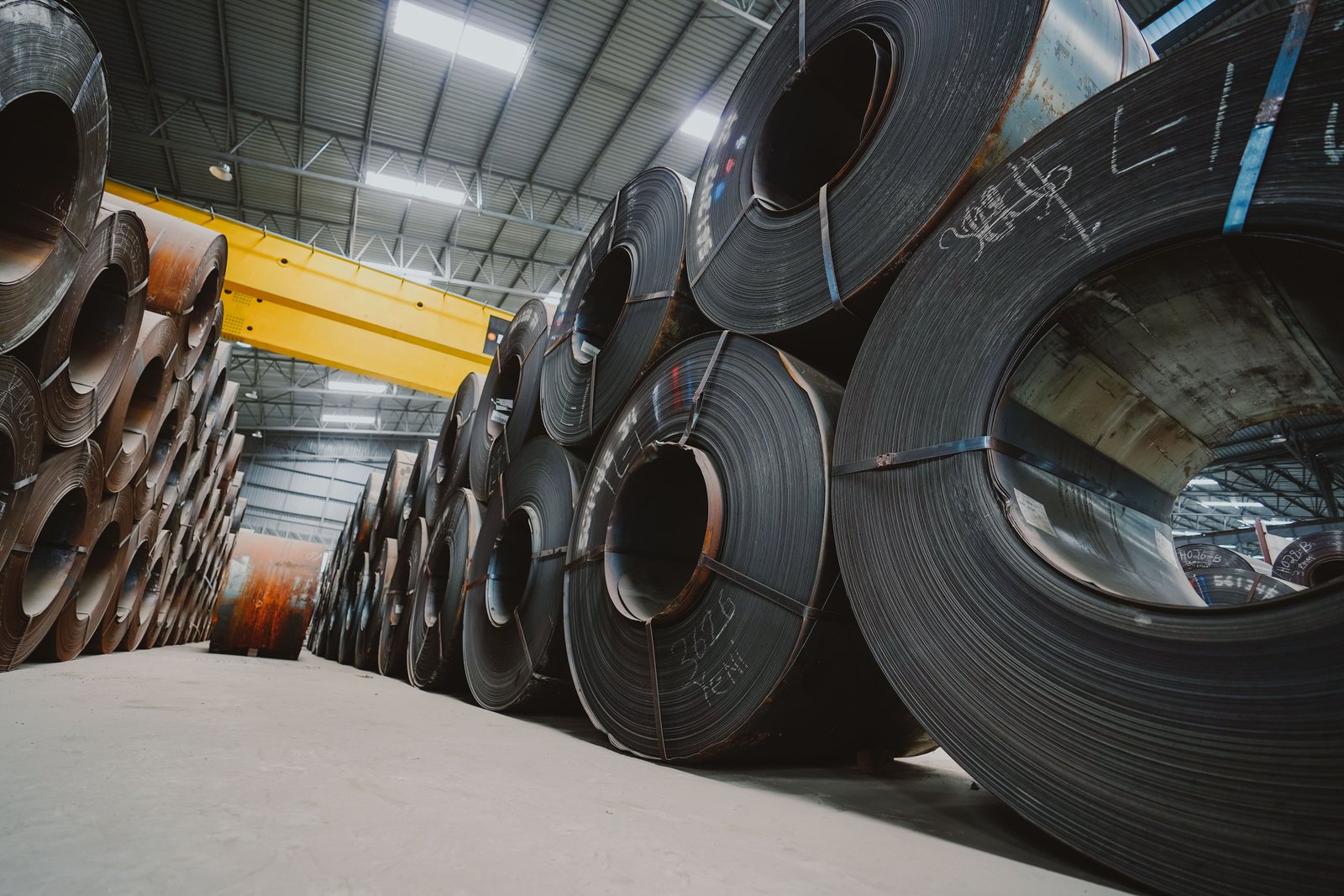
The decision-making process transcends a simple flowchart. It’s about understanding the life cycle of the component you’re creating. Will it be subjected to high stress? Does it need to be bent into a complex shape on-site? Is it a tiny spring contact or a large decorative panel? The answers to these questions dictate the ideal final state of the material. For example, the copper in a power transformer winding must be annealed to its softest state to maximize electrical conductivity and allow for tight, precise winding without damage. In contrast, the copper alloy in a ship's propeller must be hardened to withstand the immense forces and corrosive environment of the ocean. Often, the genius of an application lies in how it combines these properties. This requires a deep understanding of the material's potential and the processing tools—like the precision furnaces we build at AKS—that can reliably deliver those properties.
Prime Applications for Annealed Copper: Maximizing Formability
Annealed copper is the material of choice whenever extensive plastic deformation is required. Its high ductility and low hardness make it incredibly forgiving, allowing it to be bent, stretched, stamped, and drawn into complex shapes without fracturing. This property is foundational to some of copper's most widespread uses.
Electrical wiring is a classic example. Copper must be drawn through a series of progressively smaller dies to create wires of various gauges. This process heavily work-hardens the material. To make it possible, the copper is annealed, often multiple times, to restore the ductility needed for the next drawing stage. The final product is also left in a soft, annealed state to make it flexible for installation. Similarly, copper plumbing tubes must be soft enough to be easily bent and flared by plumbers on a job site without kinking or cracking. Architectural applications, such as roofing and cladding, also rely on annealed copper sheets that can be formed into intricate and durable designs.
I recently worked with a client in Southeast Asia that manufactures high-end, deep-drawn kitchenware from copper. They were struggling with inconsistencies and surface blemishes. By implementing one of our bell-type annealing furnaces, they gained precise control over the atmosphere and temperature. This allowed them to produce a perfectly uniform, fine-grained annealed copper stock that eliminated cracking during their deep-drawing process and gave them the flawless, bright finish their premium brand demanded.
When Work-Hardened Copper is Non-Negotiable: Strength and Durability
When the primary requirements for a component are strength, stiffness, and wear resistance, work-hardened copper is the answer. In these applications, the softness of annealed copper would be a liability, leading to deformation or failure under operational loads. The increased hardness and tensile strength from cold working provide the necessary robustness.
Consider electrical contacts and spring connectors. These components must exert a consistent contact force over thousands of cycles without permanently deforming. This "springiness" is a direct result of work-hardening. An annealed piece of copper would simply bend and stay bent. Similarly, copper alloy fasteners, like screws and bolts, rely on the strength imparted by cold-forming processes like thread rolling to handle high clamping forces. Heat exchanger fins, while thin, need to be rigid enough to maintain their shape and spacing for optimal thermal performance, a property achieved through work-hardening during the rolling process.
In these cases, the manufacturing process is designed to induce a specific amount of work-hardening to achieve a target "temper," such as quarter-hard, half-hard, or full-hard. The challenge for manufacturers is to achieve this temper consistently across millions of parts. This requires high-quality raw material and precision control over the rolling or stamping processes that impart the hardening.
The Synergy in Action: Multi-Stage Manufacturing
The most advanced and demanding applications often require a combination of properties that cannot be achieved by leaving the copper in a single state. These products showcase the true synergy between annealing and work-hardening, where different properties are engineered into different sections of the same component through carefully sequenced processing.
A fantastic example is the production of a copper water bottle. The process starts with an annealed copper disc, which is soft enough for the initial deep-drawing stage that forms the basic cylindrical shape. This drawing process heavily work-hardens the walls, making them strong and rigid. However, the top section of the bottle needs to be threaded, a process that requires greater formability. Therefore, the top of the drawn cylinder is selectively annealed—a process called induction annealing is often used here—to soften only the neck area. This allows the threads to be rolled into the softened material without cracking, while the body of the bottle remains hard and durable.
This approach of "zonal annealing" is a hallmark of sophisticated manufacturing. It allows designers to get the best of both worlds: hardness where strength is needed and softness where formability is required. At AKS, we are seeing increasing demand for custom heat treatment solutions, like our vacuum furnaces, that can support such complex, multi-stage processing for high-performance components in the aerospace, medical, and electronics industries. It shows that true mastery of copper lies not in choosing one process over the other, but in skillfully combining them.
Annealed copper is more ductileTrue
Annealing restores copper's ductility by removing work-hardening effects, making it ideal for forming processes.
Work-hardened copper conducts betterFalse
Work-hardening actually slightly reduces conductivity; annealed copper has optimal electrical conductivity.
What recommendations can help choose between annealing and work-hardening?
Facing a new component design and feeling uncertain about the right material specification can be paralyzing. Making the wrong choice between a hardened or annealed state can lead to costly redesigns and production failures. The key is to approach it as a strategic process engineering decision.
Your choice should be dictated by the final product's requirements and the manufacturing steps needed to create it. Prioritize formability with annealing if complex shaping is needed. Select work-hardening for strength and durability. Most often, a strategic combination of both is the optimal solution.
Moving beyond this simple choice requires a holistic analysis. It's not a matter of picking one from a list but of designing a material's journey. This involves critically evaluating the entire manufacturing chain, from the raw coil to the final packaged part, and strategically applying thermal and mechanical energy at the right moments. This integrated approach ensures both manufacturability and final product performance. Let me share a few guiding principles we use when advising our clients.
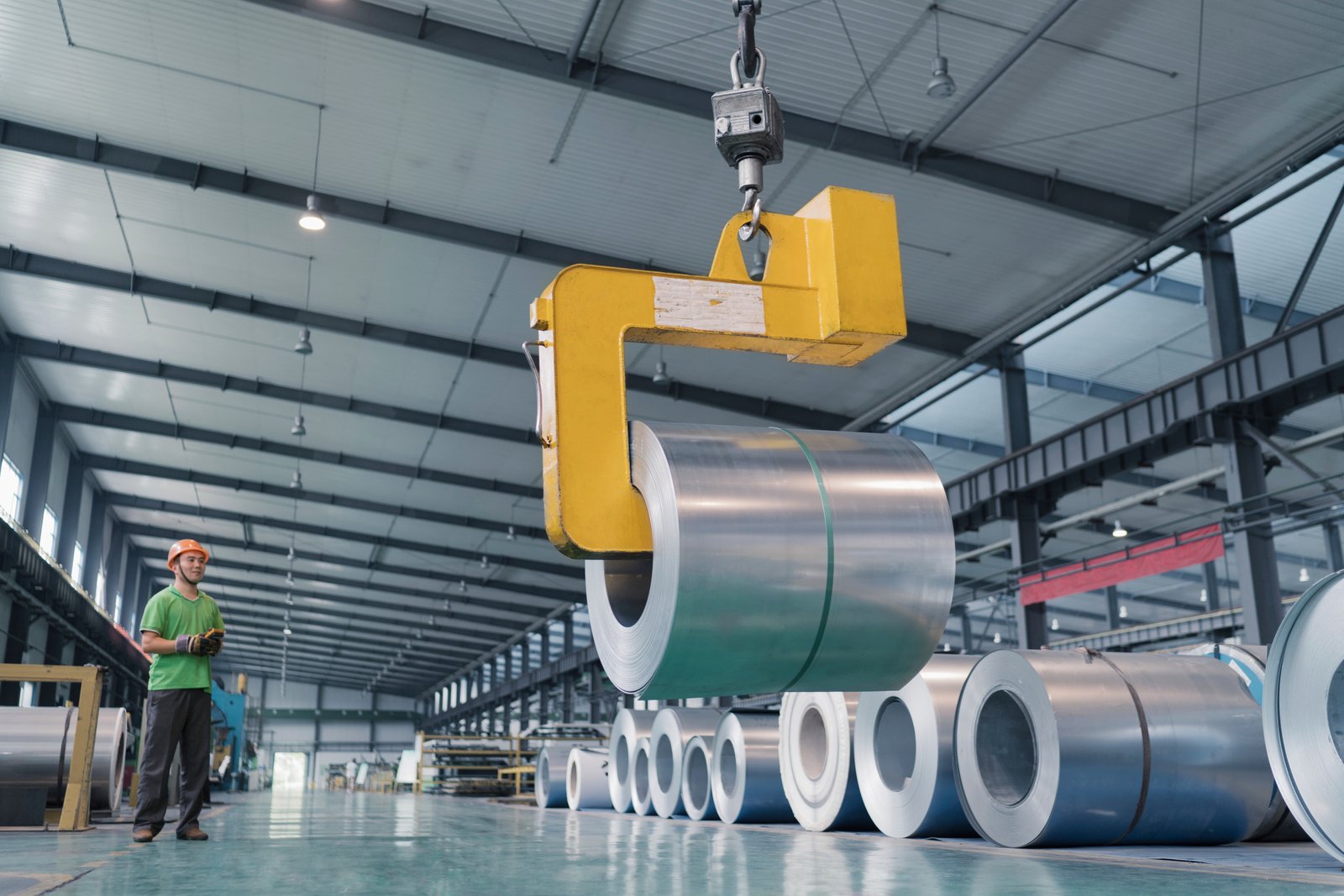
The decision-making framework should be robust yet flexible, starting with the end goal and working backward. I always tell my clients, "Don't just think about the furnace or the press; think about what the customer will be doing with your product ten years from now." Will it be under constant vibration? Does it need to flex millions of times? Is its surface finish a critical aesthetic feature? Answering these questions defines the target properties. From there, we can map out the manufacturing steps. Each step that deforms the metal is a work-hardening step. The question then becomes: at what point does the material become too hard to continue? That's where you strategically insert an annealing cycle. This methodical, step-by-step analysis transforms the complex choice into a logical sequence of engineering decisions.
Guideline 1: Define the End-Use Mechanical Requirements First
Before you can decide on a process, you must rigorously define the desired outcome. This is the most critical step. Start by asking fundamental questions about the component's function in its final application. What loads will it experience? Does it need to be rigid and strong, or soft and compliant? Is wear resistance a primary concern? Does it need to withstand cyclic fatigue? The answers will create a detailed "property profile" for the finished part.
For example, if you are manufacturing a copper busbar for a high-power electrical cabinet, the primary requirements are maximum electrical conductivity and sufficient rigidity to be self-supporting without sagging. This points toward a final state that is fully annealed (for conductivity) but thick enough to provide structural integrity. In contrast, a spring element in a relay switch needs high yield strength and elasticity to function correctly, pointing unequivocally to a work-hardened temper.
At AKS, our initial consultation with a potential client always revolves around this discovery phase. We don't lead with furnace specifications; we start by understanding their product and its application. By defining the end-use requirements first, we can provide targeted advice on the necessary material state and the equipment, like our high-efficiency bogie hearth furnaces, best suited to achieve it reliably.
Guideline 2: Analyze the Entire Manufacturing Process
Once you know your destination, you must map the journey. Break down the entire manufacturing flow into individual steps: blanking, stamping, drawing, rolling, bending, etc. Every single step that involves mechanical deformation adds work-hardening to the material, reducing its ductility. You need to analyze the cumulative effect of these operations.
Create a "work-hardening budget." If the total deformation required to get from the raw material to the final shape exceeds what the copper can handle in a single go, you must plan for one or more intermediate annealing stages. For a client making deep-drawn stainless steel sinks, for instance, the material starts as an annealed sheet. The first draw forms a shallow basin and significantly hardens the steel. To achieve the final, deep shape without the corners cracking, the partially formed sink must pass through a continuous bright annealing furnace to restore its ductility before the final drawing stage.
This analysis prevents costly trial-and-error on the production floor. By planning for these thermal resets, you can design a seamless, high-yield manufacturing process from the outset. Our continuous mesh belt furnaces are specifically designed for such in-line, intermediate annealing steps, providing the high throughput and consistent quality needed for high-volume production.
Guideline 3: Conduct Prototyping and Material Testing
Theory and analysis will get you 90% of the way there, but the final 10% requires empirical validation. Once you have a theoretical process mapped out, it is essential to conduct prototyping and rigorous material testing. Produce sample parts using different levels of cold work and varying annealing cycles (testing different temperatures and soak times).
After processing, test the prototypes for the critical properties you defined in Guideline 1. Use tensile testers to measure strength and elongation, hardness testers to confirm temper, and metallographic analysis to inspect the microstructure and grain size. This data provides invaluable feedback, allowing you to fine-tune your process parameters for optimal results. For example, you might find that annealing at 550°C for 3 minutes gives you the perfect balance of ductility and fine grain structure, while annealing at 600°C results in excessive grain growth.
This is why investing in precise and repeatable equipment is non-negotiable. A furnace that cannot hold a stable temperature or a rolling mill that produces inconsistent reductions will make it impossible to run a controlled process. The advanced control systems and energy-saving designs of our AKS furnaces provide the stability and precision needed to move from a successful prototype to a reliable, large-scale production, ensuring that the millionth part has the exact same properties as the first. This investment in control is an investment in quality and profitability.
Annealing improves formabilityTrue
Annealing softens the material by recrystallizing the grain structure, making it easier to shape without cracking.
Work-hardening reduces conductivityFalse
Work-hardening primarily affects mechanical properties like strength and ductility, not electrical conductivity which depends on crystal structure purity.
Conclusion
Ultimately, mastering copper manufacturing requires treating annealing and work-hardening not as opposing forces, but as complementary tools. Strategic application of each process throughout the production cycle is essential for controlling mechanical properties, optimizing formability, and ensuring the final product meets its performance specifications flawlessly.
-
Learn the benefits of intermediate annealing during wire drawing stages ↩
-
Explore the role of AKS furnaces in controlled microstructure transformations. ↩
-
Understanding the use of bogie hearth furnaces in precise temperature control applications. ↩
-
Learn about the microscopic changes that lead to macroscopic material properties ↩
-
Understand the significance of IACS in copper's electrical performance ↩

